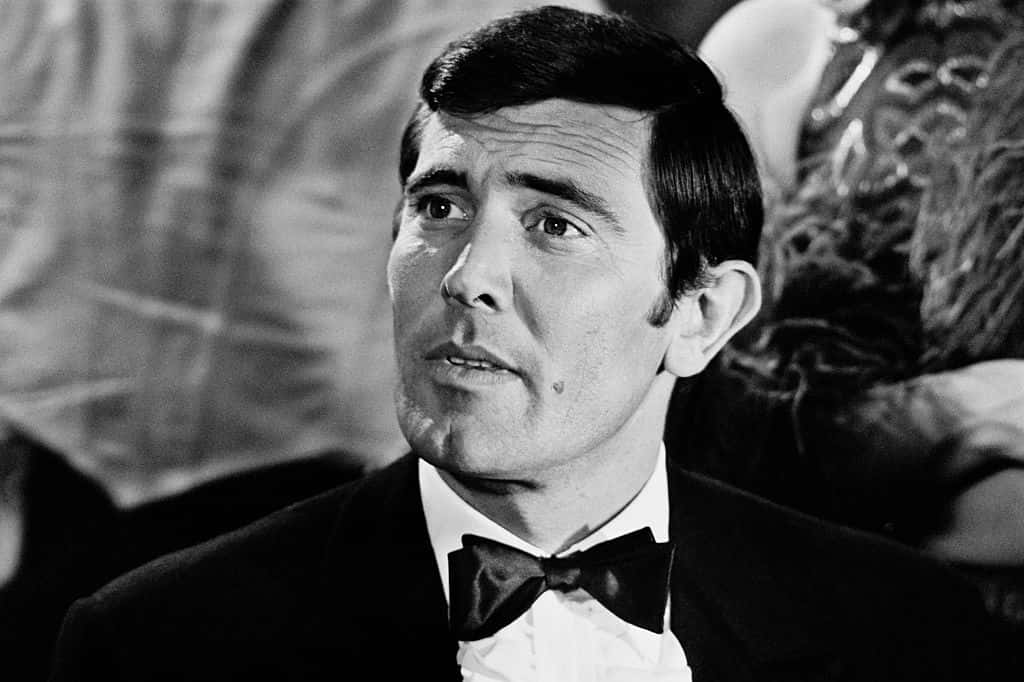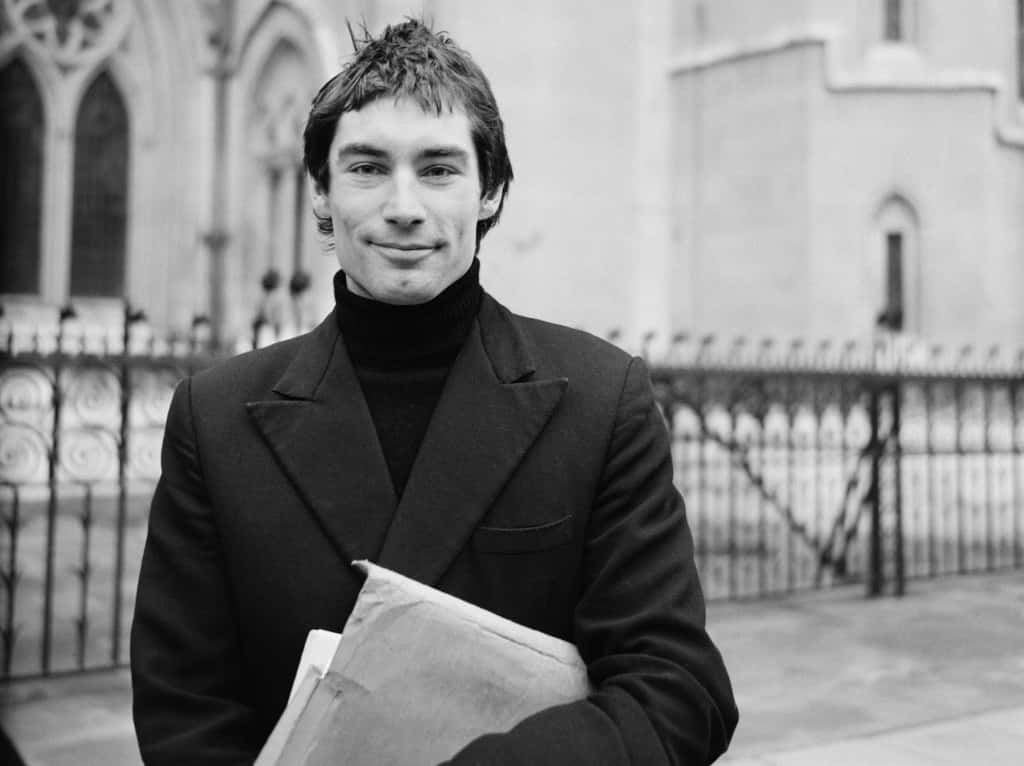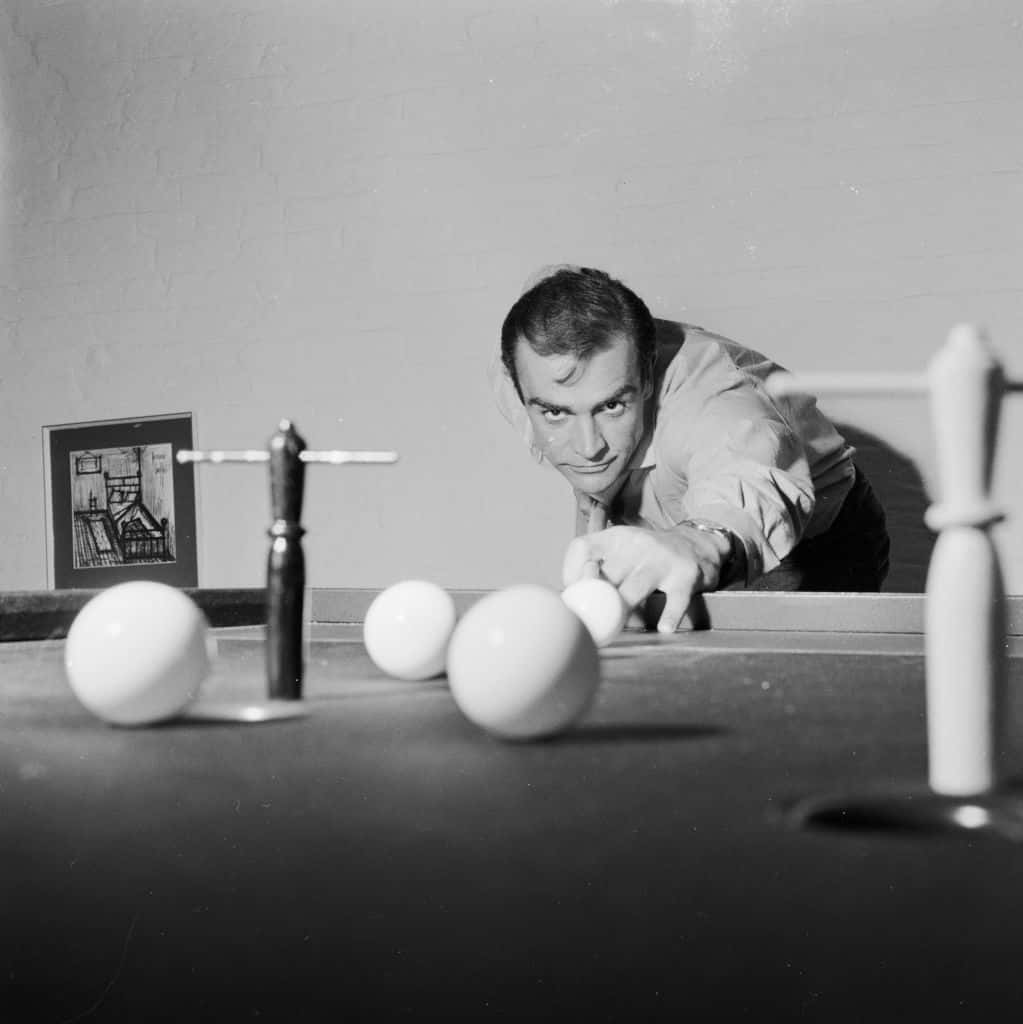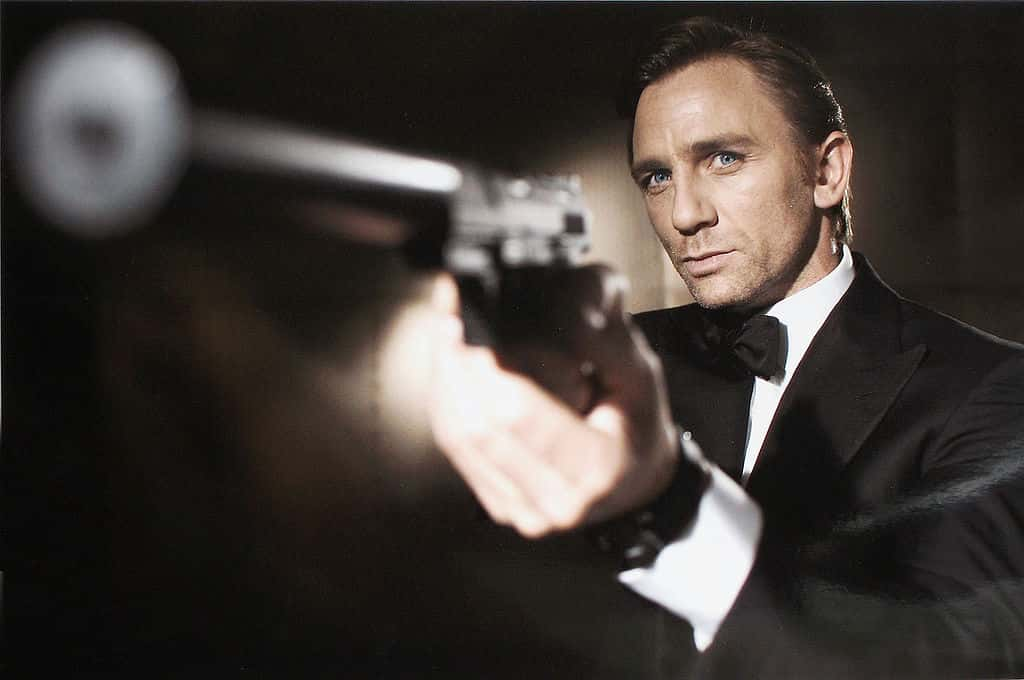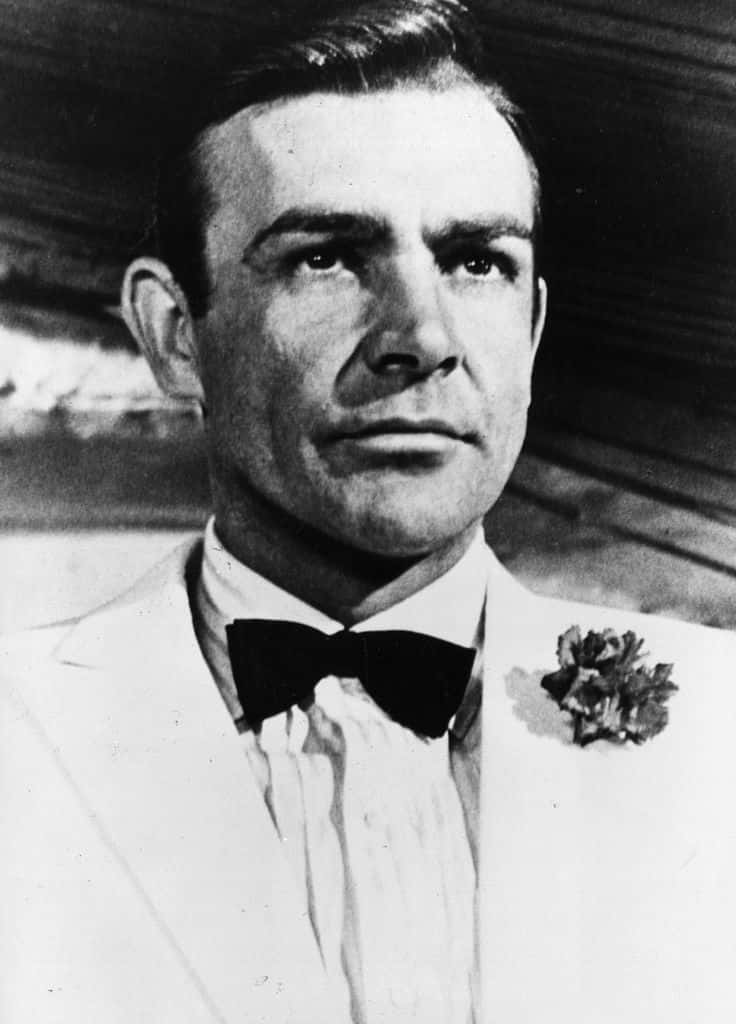For over 50 years, the iconic James Bond has graced the silver screen with a shaken martini in hand. No matter who portrayed the super-spy—from 90s heartthrob Pierce Brosnan to participation ribbon recipient George Lazenby—playing Bond always requires actors to bring new elements to the role while staying true to the character’s core. The best James Bond has a playboy’s swagger, a spy’s quick thinking, and a Brit’s dry wit.
But as we’ll see, playing Ian Fleming’s dashing super-spy is a tall order—and not everyone makes the cut. Follow along as I guide you through a profoundly biased ranking of the best and worst James Bond performances.
6. George Lazenby: The Amateur
Into It: On Her Majesty’s Secret Service (1969)
Yikes: On Her Majesty’s Secret Service (1969)
Not a typo. Dude was only in one movie. While Lazenby’s portrayal didn’t make a huge impact, his behind-the-scenes dramatics certainly did. Scouted at a barbershop by producer Cubby Broccoli, then-model Lazenby quickly landed the coveted role—only for everything to derail in a spectacular mess.
Partway through shooting, Lazenby burned all the bridges, describing how the producers treated him like this was his first acting job (it was?). Producer Cubby Broccoli called Lazenby his “biggest mistake” while co-star Diana Rigg opted for “bloody impossible.”
On-set drama aside, Lazenby’s actual performance is serviceable, which is more of a compliment than it sounds. OHMSS plunges Bond into dark emotional territory—the movie fridges Bond’s new bride Tracy Di Vicenzo—and Lazenby does a surprisingly fine job with the weighty material. At the same time, it’s hard to feel entangled in Lazenby-Bond’s man pain because we only know the guy for two hours. Womp womp.
5. Roger Moore: Here For A Good Time
Into It: Live And Let Die (1973)
Yikes: Tie between two unintentional masterpieces: Moonraker (1979) and A View To A Kill (1985)
My father assures me that Roger Moore (RIP) was a lovely man who spent most of his time being pleasant and donating to charity. While this warms my heart, this article is about Bond performances, not Bond actors, and for me, Moore’s light-hearted Bond never clicked.
Moore’s Bond is almost too sly, suave, and smooth. Even though he’s in high-octane action sequences, you rarely feel like he’s in genuine peril because everything glances off him. As the movies continued, directors took their cues from Moore’s upbeat performance. It’s not a coincidence that as the lead actor embraced levity, the franchise went all-in on its most ludicrous plots and characters—Christopher Lee’s three-nippled villain, anyone? Greenlighting a movie called Octopussy?
I see why Moore’s embrace of ridiculousness works. His buoyancy places viewers in a world of fantasy and entertainment, not doom and gloom spy melodrama. For people who like this kind of Bond movie, have at it! But for me personally, there are more enticing options.
4. Pierce Brosnan: We Could Have Had It All
Into It: GoldenEye (1995)
Yikes: The World Is Not Enough (1999)
Unlike most movie critics, Roger Ebert always gave a blockbuster the credit it deserved. Describing Goldeneye, Ebert hit the nail on the head when he wrote that Pierce Brosnan is “more sensitive, more vulnerable, more psychologically complete” than Bond’s past selves. I’m with Roger: combining an absurd degree of handsomeness with wit and gravitas, Brosnan’s performance in GoldenEye (1995) is perfection.
There was just one problem: Brosnan made exactly one good Bond movie. His next efforts, even Tomorrow Never Dies (1997) with the amazing Michelle Yeoh, failed to reach the dazzling heights of GoldenEye. If Brosnan’s next movies let him flex his acting muscles a bit more, he might top this list. But man oh man, they did not.
Instead, poor Brosnan gives bedroom eyes to Denise Richards’ geologist Bond Girl, Dr. Christmas Jones, and says, “I thought Christmas only comes once a year.”
3. Timothy Dalton: The Dark Horse
Into It: Licence to Kill (1989)
Yikes: The Living Daylights (1987 and here by default—it’s a fine movie!)
This is where my millennial contrarian shines through. Even though most people forget that Timothy Dalton played Bond, in this essay I will argue that for two solid movies, the classically trained actor did an excellent job. Dalton drew on his experience with Shakespeare to actually think about what made Bond tick, a creative choice that led producers to lean in with 1989’s ultra-dark Licence to Kill.
Featuring a young Benicio Del Toro and a shark ripping a man to shreds, this movie does not mess around, providing an uncomfortably violent look at Bond’s assassin for hire. Dalton goes all in with this gritty interpretation of Fleming’s spy, working with Robert Davi, who plays the cartel boss, to make hero and villain more alike than distinct. It’s a fascinating experiment that, in my opinion, paved the way for Daniel Craig’s turn in the magnificent Skyfall.
2. Sean Connery: The Classic Choice
Into It: Goldfinger (1964)
Yikes: You Only Live Twice (1967; kill it with fire)
Do I even need to write this entry? According to most of the internet, Sean Connery is the ultimate Bond. Balancing charm with just the right amount of menace, there’s a reason that Connery’s portrayal set the standard.
At the same time, because he’s such an obvious pick for the top spot, I should explain why he doesn’t take this list’s gold medal. I have two main reasons: Yellowface and just a bit too much smarm. As someone full of #allthefeels, Connery’s too-cool-for-school Bond stays in second place.
1. Daniel Craig: The Hill I Die On
Into It: Skyfall (2012)
Yikes: Quantum Of Solace (2008)
Fight me. Daniel Craig is the best Bond. Breaking onto the scene with the stunning Casino Royale, Craig brought gravitas and reluctant sensitivity to a man who, under another actor’s purview, could read as a smarmy playboy with a liver in need of serious TLC. Craig’s Bond, an emotionally traumatized orphan, does away with Brosnan’s polish and Moore’s glee, riffing on Connery’s latent brutality and Dalton’s attention to psychological depth.
Before the campy silliness of Spectre, Craig’s Bond read like a Bourne Identity-influenced drama which, depending on who you ask, meant betraying the series’ roots in 1960s pulp. Personally, I enjoy it when art takes risks and tries new things. If Bond movies stayed the same, I’d probably stop seeing them.
Bond in the 21st Century
The Daniel Craig era changes the game in one key way: it reflects on earlier entries in the Bond franchise and rather than celebrating the super spy, seriously considers what it means to consider this man as a hero. While Brosnan’s movies equivocated Bond with a Good Guy, Craig’s movies can’t agree. Throughout Craig’s tenure, Bond has grappled with the consequences of his actions. If he keeps endangering women he loves (like Eva Green’s Vesper Lynd) and being forced to eliminate sympathetic victim-villains (like Javier Bardem’s Raoul Silva), are his actions truly good?
By refusing to take Bond and MI6’s goodness for granted, the Craig movies open up pertinent and interesting questions about the morality of action movies, the disastrous fallout of international espionage, and the changing nature of heroism and masculinity.
While the Craig movies have a long way to go—they still set British Bond against far too many vaguely-ethnic-and-thus-evil villains—this era of Bond flick did cast Naomie Harris as Moneypenny, hired out actor Ben Whishaw to take over as tech wiz Q, brought on Lashana Lynch to play a new 007, and recruited Phoebe Waller-Bridge to contribute to the script of No Time To Die (2020). In other words, after decades of Bond’s mostly white, hetero, womanizing world, the times are finally changing.
The Man, The Myth
Each Bond preserves what we value in a masculine hero. From suave, intimidating Sean Connery and his army of one-dimensional Bond Girls to tormented Daniel Craig and his unexpected fellowship with M, Bond’s changing character offers audiences distinct visions of manhood and morality, each calibrated to a specific time in our shared popular culture.
While Connery kicked things off with a smooth-talking, emotionally unavailable killer for hire, Craig’s Bond explores why we glorified this kind of man in the first place while still, it must be said, falling into plenty of the same pitfalls. Even so, I appreciate that Craig’s Bond grapples with the series’ baggage and tries to build something better. The movies are often haphazard and messy, but hey, they’re asking haphazard, messy questions.
For me, new Bond is all about cracking the veneer of the suave super-spy and revealing the confusing muddle of associations and values inside.
Sources: 1, 2, 3, 4, 5, 6, 7, 8, 9, 10, 11, 12, 13, 14, 15, 16, 17, 18, 19, 20, 21


